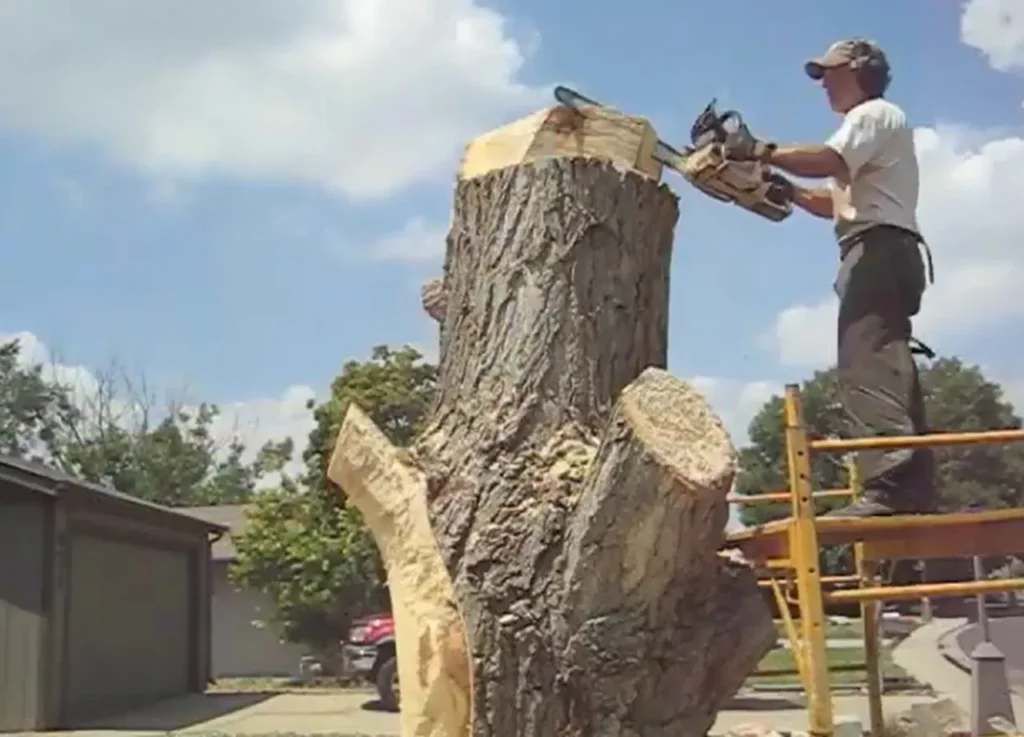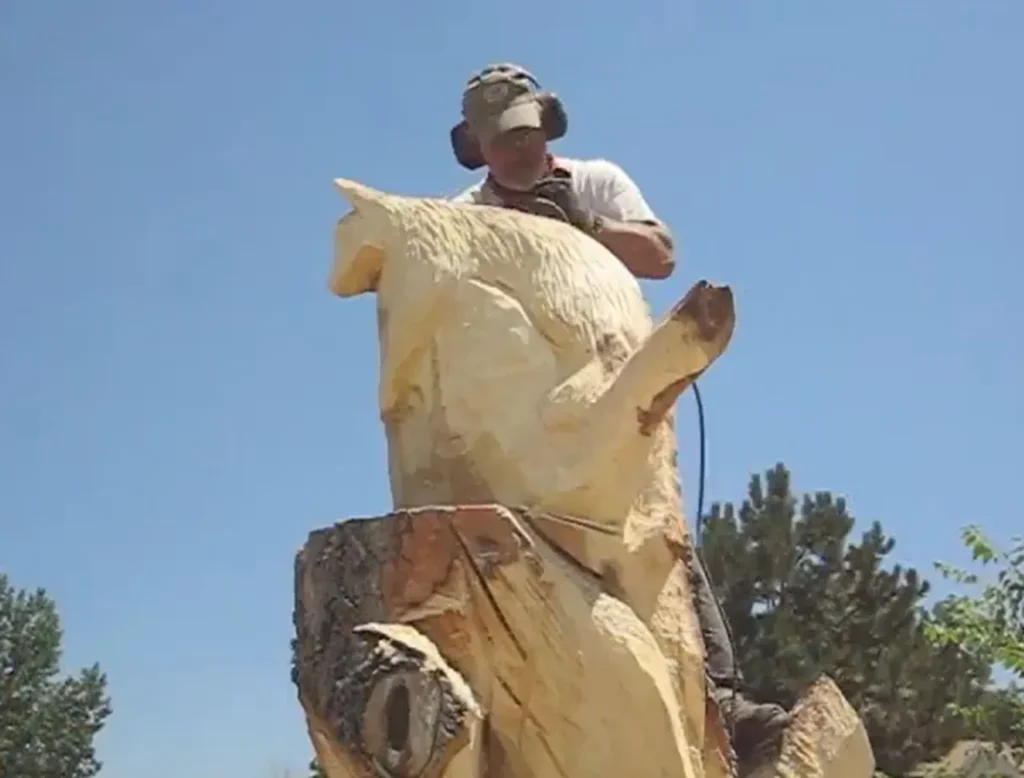After cutting down a tree, a man was left with a big and unsightly tree stump in his front yard. Most people would be quick to pull out heavy machinery to remove it, but instead, he had a different idea. He called in an artist who wields a chainsaw like a maestro with a baton.
The artist, a true master of his craft, took on the challenge with enthusiasm. Armed with a chainsaw, power tools, and an airbrush, he began the intricate process of transforming the stump into a breathtaking piece of artwork. This wasn’t just about removing an eyesore; it was about creating something beautiful from what many would consider waste.
The transformation started with rough cuts, shaping the stump into a basic form. The artist’s skill with the chainsaw was evident as he maneuvered it with precision, carving out the initial design. This stage required a lot of physical strength and a keen eye for detail, as one wrong move could ruin the entire piece. But the artist was undeterred, meticulously working to bring his vision to life.
Once the rough shape was complete, he switched to finer tools, chiseling out the intricate details that would define the final piece. This process was painstakingly slow, but it was here that the stump began to take on a new identity. Each cut and carve brought it closer to its final form, revealing the beauty hidden within the wood.
The next phase involved smoothing and refining the surface. Sanding down the rough edges and polishing the wood gave it a sleek, professional finish. The artist’s attention to detail was remarkable, ensuring that every inch of the sculpture was perfected. This stage also highlighted the natural grains and patterns in the wood, adding an organic beauty to the piece.
But the transformation didn’t stop there. The artist then used an airbrush to add color and depth to the sculpture. This step was crucial in bringing the piece to life, adding vibrancy and highlighting the intricate details. The use of color also helped to convey the environmental message behind the artwork. By upcycling the stump, the artist demonstrated how we can find beauty and purpose in what might otherwise be discarded.
As the final touches were added, the true extent of the artist’s talent became clear. The once unsightly stump was now a stunning piece of art, standing proudly in the front yard. This transformation wasn’t just about aesthetics; it was a powerful statement about the importance of upcycling and environmental conservation.
Upcycling is the process of transforming waste materials into new, valuable items. It’s a practice that promotes sustainability and creativity, encouraging us to see the potential in what we might otherwise throw away. The artist’s work with the tree stump is a perfect example of this. By turning an unwanted stump into a beautiful sculpture, he showed that we can create something meaningful and valuable from what might seem like trash.
This project also highlights the importance of considering alternative solutions to common problems. Instead of removing the stump and adding to landfill waste, the homeowner chose to create something beautiful and lasting. This decision not only saved money and resources but also added a unique feature to the property. Sometimes, the best solutions are the most creative ones.
This transformation highlights the creativity and resourcefulness that can turn something mundane into a masterpiece.

